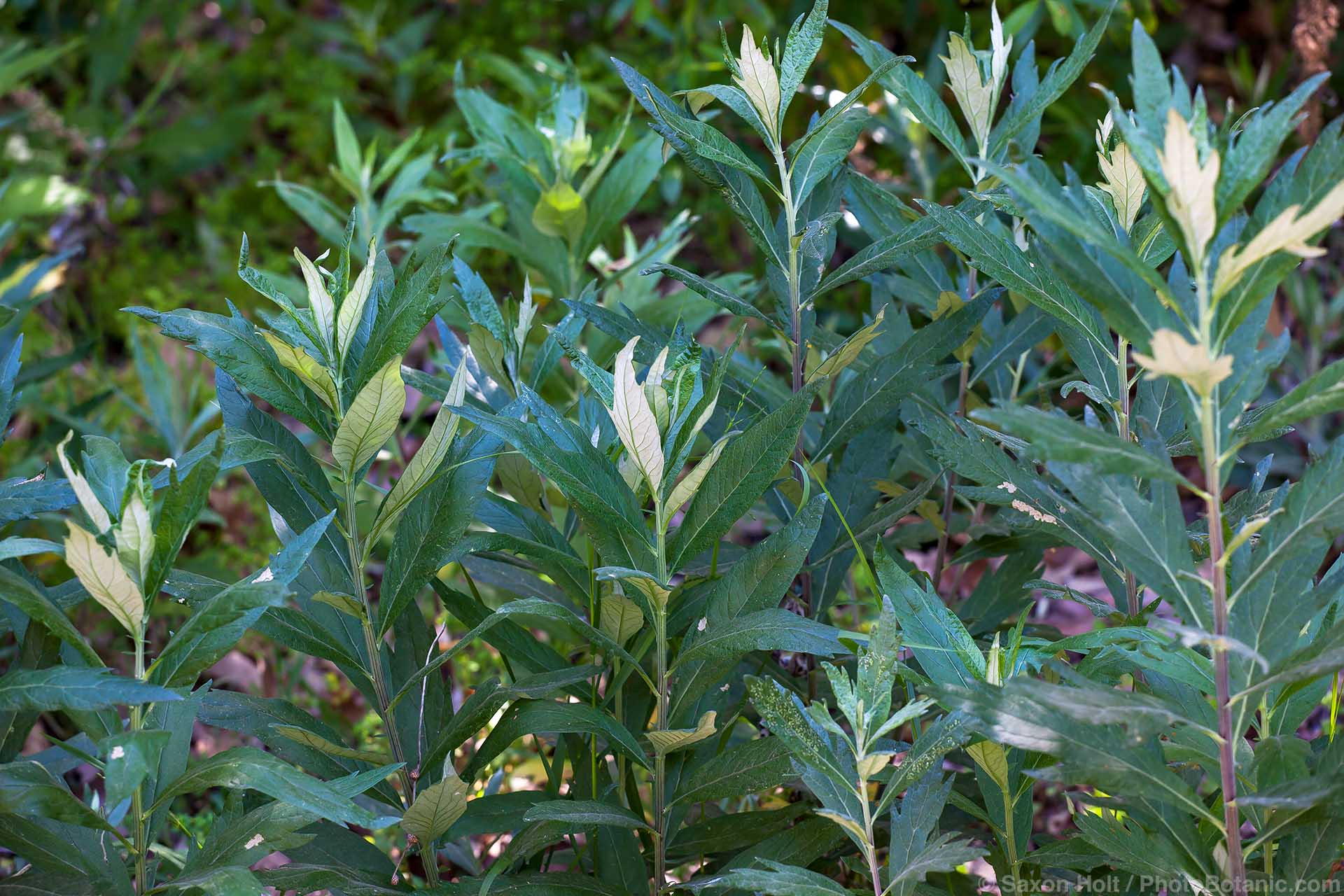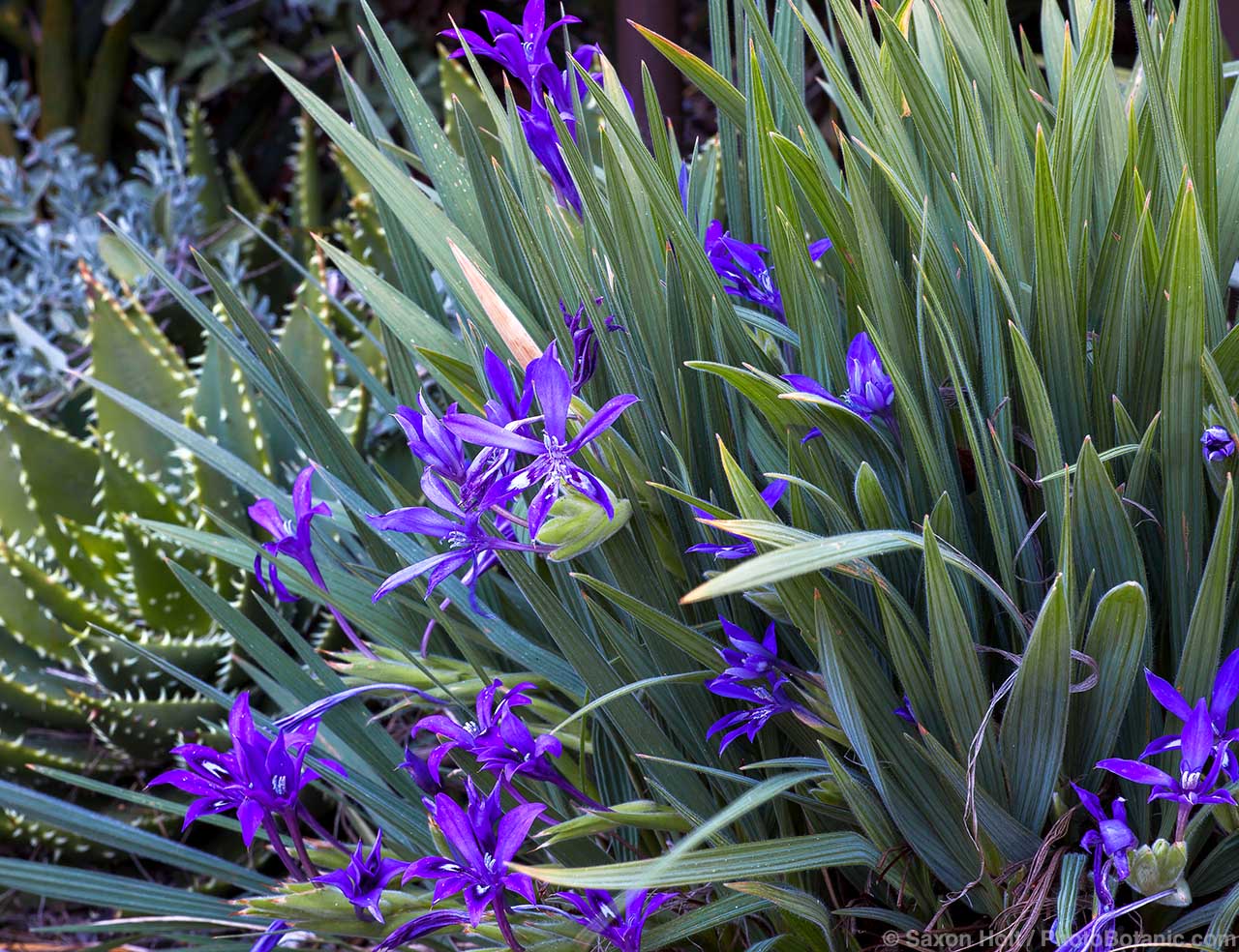Agave striata
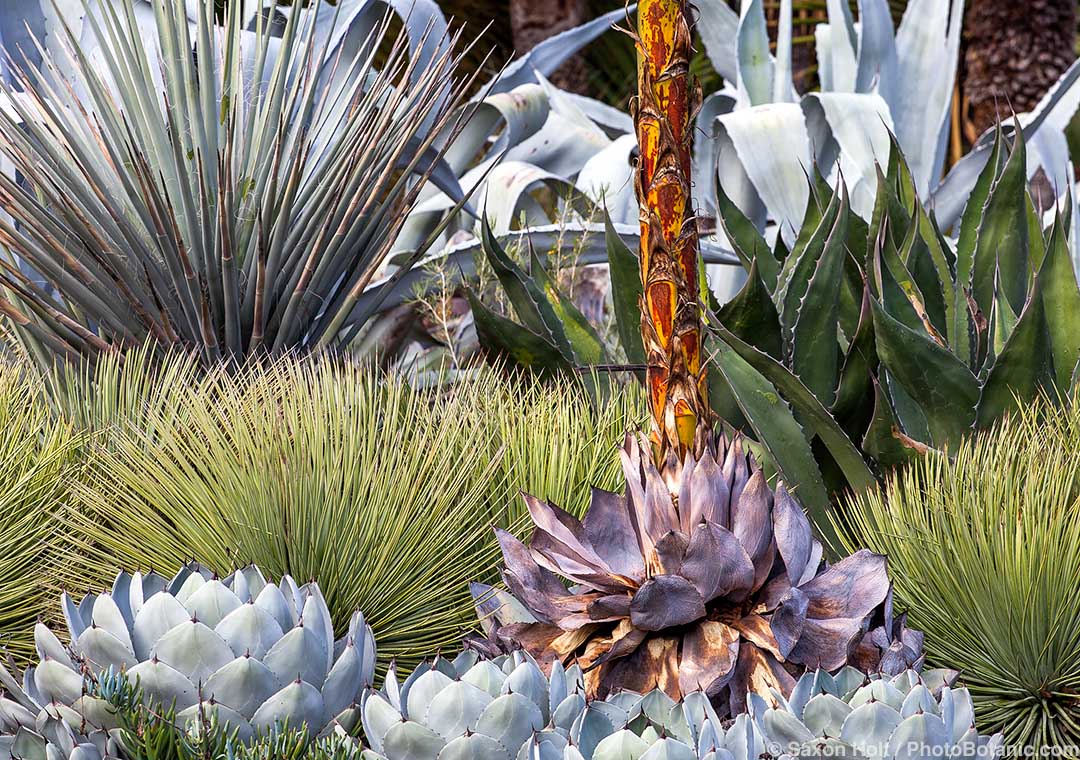
Share This!
There is a place in almost every garden for the calming effect of architectural or sculptural plants. These provide vivid contrast in texture and form to the blowsy, undisciplined character of many of our favorite perennials and shrubs. Some are grasses, some are yuccas, some are dasylirions, and many are agaves. Agave striata, with the common name of narrow-leaved century plant, is a distinctive example.
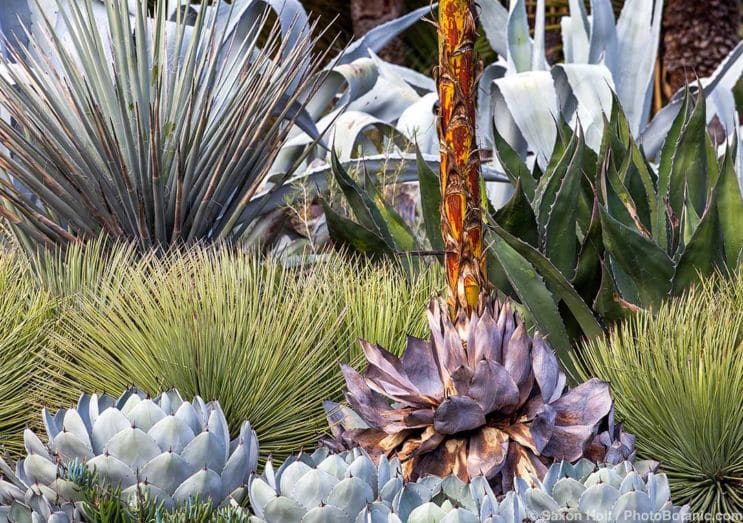
Agave striata with Yucca baccata (behind) and Yucca parryi var. truncata (in front)
Agave striata is a fairly small plant, two to three feet tall and wide, with a spherical rosette of many stiff, often rigid, pencil-thin leaves with brownish tips ending in needle-sharp spines. Leaves are one-third of an inch (10 mm) wide or less and stand stiffly upright, straight or arching but always erect. The plant forms a perfect ball of green, reddish, or purplish leaves. Leaves may be more green in part shade and more red in full sun. ‘Guadalcazar’ is smaller, about one foot tall and wide.
When fully mature, which may take five to eight years, Agave striata sends up a tall stalk bearing greenish yellow, reddish, or purplish, tubular flowers. At or after flowering, the plant branches to form new rosettes near the base of the flowering stalk, over time developing into a large clump.
Agave striata is native to arid valleys and plains over a wide area of northeastern and central Mexico from Coahuila and Nuevo Leon south to Queretaro and Hidalgo. At least two subspecies are usually recognized, each with various synonyms. Subspecies striata (A. echinoides, A. recurva) is variable throughout the region. Subspecies falcata (A. paucifolia, A. californica), found mostly to the north, has fewer and broader leaves and is adapted to even drier habitats.
Those hoping to obtain this plant should know that there seems to be some confusion in the trade, especially if you try to buy plants online or from garden centers. The mix-ups likely are caused not only by the many forms and synonyms. A similar plant, Agave stricta, or hedgehog agave, is often considered a form, variety, or subspecies of A. striata and may be offered as such. It also may be offered as A. striata or as one of its synonyms.
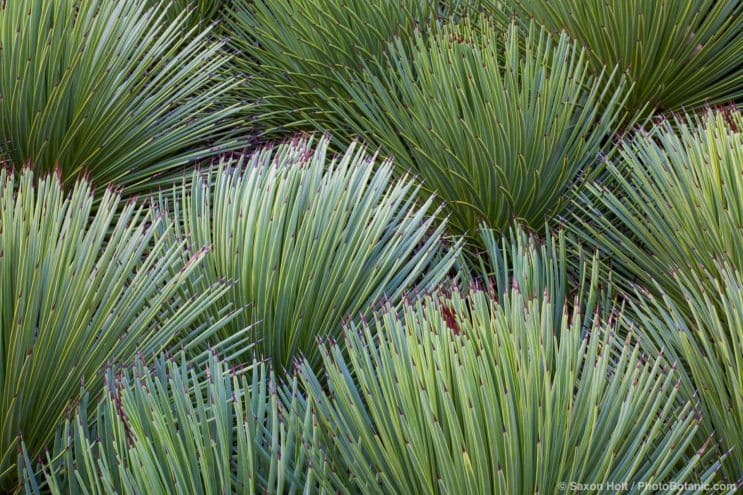
Agave stricta is similar in form to A. striata
Agave stricta is native to semiarid southwestern Mexico around Tehuacan in southern Puebla and northern Oaxaca. This plant is similar to A. striata in form and growth habit but with shorter flower tubes and leaves that are green, never red, sometimes with pale yellow, minutely serrate margins.
Both of these agaves in all of their forms are good candidates for formal or informal gardens in summer-dry climates. While most are quite hardy, all need good drainage. Drainage must be near-perfect where winters are especially wet.
Share This!
Related Articles
By: Nora Harlow
By: Nora Harlow
By: Nora Harlow



